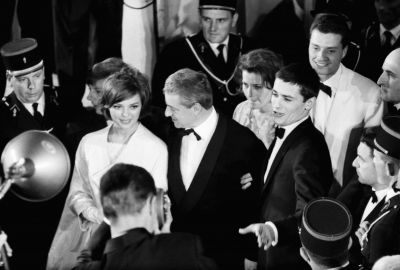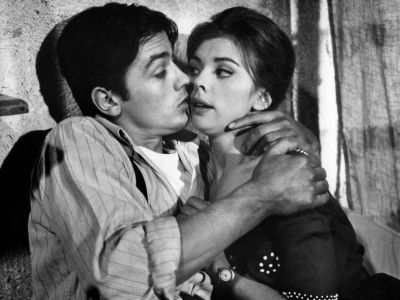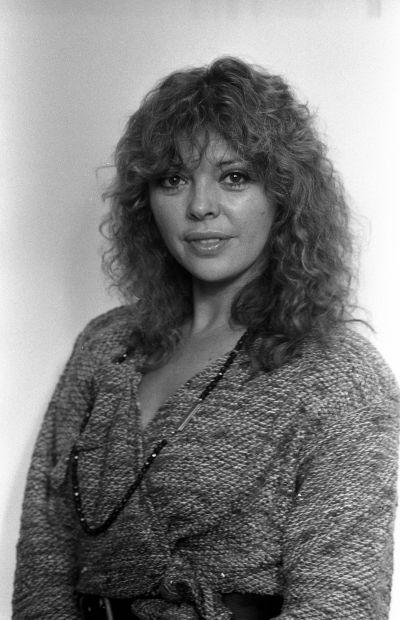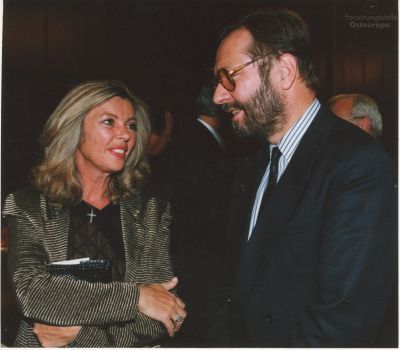Barbara Kwiatkowska-Lass (1940–1995)

Barbara Kwiatkowska (born on 1 June 1940 in Patrowo in Kujawy) was barely 17 when she became famous overnight thanks to her title role in Tadeusz Chmielewski’s film “Eva wants to sleep” (1957). The young woman, who was completely unknown at the time, starred alongside Stanisław Mikulski playing a pupil searching for a place to sleep the day before school starts because she does not want to stay at boarding school. The film starred a lot of great actors from Polish cinema, such as Roman Kłosowski, Kalina Jędrusik, Jan Kobuszewski and Ludwik Benoit. The dialogues were written by Jeremi Przybora. Kwiatkowska, who did not have any experience as an actress, was cast through a competition in the weekly magazine “Film”. Only years later was it revealed that the casting was really just for appearance’s sake because employees of the director Tadeusz Chmielewski had already discovered the strikingly pretty young girl dancing in the short film “Epizod” (Episode) by Bronisław Brok. At the time, Kwiatkowska attended the ballet school in Warszawa (Warsaw) and dreamt of a career as a dancer. If this accidental meeting on set had not happened, she might never have appeared before the camera as an actress. Years later, Tadeusz Chmielewski, whose directorial debut was the film “Eva wants to sleep”, would recall, “The deception involved in selecting the person to play Eva was that I had already chosen Basia[1] Kwiatkowska at a much earlier stage. Even the costumes for her were already made. She knew from the start that she would win. I agreed to the competition because it was a super advertisement for the film which didn't cost us anything. Basia was an extraordinarily beautiful, quite natural girl who appeared to be quite innocent and who immediately presented an interesting contrast to the villains. At the same time, she had a talent for acting”[2].
The choice of the unknown dancer from a village in Kujawy for the title role of Eva proved ideal. The success of the comedy, which was made in the style of a backyard ballad, was enormous. Barbara Kwiatkowska quickly ascended to the premier league of actresses. People marvelled at her remarkable aura and praised her for her charm and acting talent. Thousands of Polish men were beguiled by the young woman. Roman Polański, who was a film student at the film academy in Łódź, was very taken by her. When he met her for the first time in the foyer of the Grand Hotel in Łódź in 1957, she took his breath away, as he admitted years later, “She was the most beautiful girl I had ever seen. Dark-haired, almost brunette, with an oval face, beautiful long eyelashes, a little stub nose and a flexible, toned body. For an eighteen-year-old, she was quite prudish and introverted so that I was not initially a serious candidate for her affection.”[3] When he then asked his fellow student Janusz Morgenstern about her, he answered: “She’s starring in ‘Ewa chce spać’ and is called Barbara so and so.”[4]
At the time, Barbara Kwiatkowska was having an affair with Tadeusz Chmielewski. Because the relationship with the married director, who was a dozen years older, was inevitably destined to fail, the young woman, plagued by doubts, often confided in Roman Polański. The two eventually became a couple, although their relationship could be classed as somewhat liberal because both of them had other partners. And what’s more, Barbara was also linked to the graphic artist Lech Zahorski, but this did not stop Polański asking for her hand in marriage. She said ‘yes’ and the pair married in 1959. The marriage was celebrated so boisterously that the neighbours had to call the police. However, the police officers left again without taking any action when they realised that the bride was the famous actress.
Her career in France began under the protection of Polański. Because Barbara Kwiatkowska did not speak any French, her husband established contact with directors and also chose the roles for her. She had to learn the scripts phonetically off by heart. Polański’s contacts got her the main role in the film “La 1000eme fenêtre” (The house of the 1000 windows) by the French director Robert Ménégoz . One year later in 1960, she played alongside Alain Delon in the Italian-French production “The joy of living” (Original title: Che gioia vivere). At that time, the producer persuaded her to adopt the stage name “Lass“. Roman Polański spent his wife’s fee on a red Mercedes convertible. It soon turned out that this striking car would be the only souvenir of his marriage to the actress.
In 1961, Barbara Kwiatkowska-Lass travelled to Rome where she met the Austrian actor Karlheinz Böhm on the set of the film “Rififi in Tokyo. Böhm had become a cinema icon in Germany and in Austria when he played the young Emperor Franz Joseph in “Sissi” in 1955. The beautiful-looking actor, who was famed for playing lovers, was a heartthrob and Kwiatkowska also fell victim to his charm. Soon afterwards, she became his third wife. The couple settled in Bavaria. The actress, who had had great success in Poland and abroad, now led her life at the side of her famous husband. In 1964, their daughter Katharina was born and Barbara led her life as a wife and mother. But their idyll was clouded by Böhm’s jealousy and he forbade her to make any more films. The actress succumbed to the will of her husband and allowed him to write to her agent that she should not be sent any more film offers. In an interview years later, she admitted, “I behaved like an idiot. I regret it because my decision was testimony to my weakness”. [5]
In 1967, Barbara Kwiatkowska could be seen once more alongside Daniel Olbrychski and Zbigniew Cybulski in the title role of “Jowita”. After that, she disappeared almost completely from the screen and only appeared sporadically in German film and TV productions, such as “Der Pfarrer von St. Pauli” (1970) and in Rainer Werner Fassbinder’s “Effi Briest” (1974). In the main, she devoted herself to her home and to bringing up her daughter who, as a young adult, also decided to be an actress. Her parent’s marriage finally fell apart in 1980. Kwiatkowska wanted to return to the screen but this was not easy for her because the long hiatus meant that she had been forgotten by the film world. Nevertheless, she did manage a few more films, with her most famous role during this period being the mother in “Rosa Luxemburg” (1986).
After divorcing her husband, she found herself in a new role. After the state of war was declared in Poland, Kwiatkowska decided to support the opposition that was rebelling against the Communist regime. She organised support for Solidarność and sent packages to Poland. Members of the opposition stayed in her house in Bavaria, and occasionally people also sought refuge there. A unique friendship connected the actress to Jacek Kaczmarski, the well known bard of the trade union movement. Andrzej Wajda and Agnieszka Osiecka were also among her visitors. In the 1980s, she began working with the radio station Freies Europa in Munich, where she was also involved in the liberal Klub Niezależnej Myśli Politycznej im. Juliusza Mieroszewskiego (Juliusz Mieroszewski Club for free political thought). Together with her new life partner, the jazz musician Leszek Żądło, Barbara Kwiatkowska founded and also led the association Stowarzyszenie na Rzecz Porozumienia Niemiecko-Polskiego (Association for the promotion of German-Polish understanding). The couple even considered moving to Kraków where they bought a house. But this plan did not come to fruition because, just as everything in her life seemed to be going well, she was diagnosed with a serious illness - viral hepatitis C. The doctors only gave the actress ten years at most to live. But her death came suddenly. She died in March 1995 from a brain haemorrhage which happened at a concert played by the famous jazz trumpeter Al Porcino in Baldham near Munich. Her funeral, which was overshadowed by a scandal, was held in the Rakowicki cemetery in Kraków. Shortly before the memorial service, it was noticed that the urn with the actress’s mortal remains had gone missing. The urn was found in Bytom after an extensive search, in which even the Polish State Protection Office was involved, so the interment could still take place but with somewhat of a delay. Chiselled in stone on her headstone were notes from a piece of music by Leszek Zadlo that he had dedicated to her, as well as an inscription from the pen of Jacek Kaczmarski, a good friend of the actress, which states: “Ewa wants to sleep... Basia lived, loved. Now she’s sleeping.“
Monika Stefanek, November 2021
I would like to thank Leszek Zadlo and the Research Centre for East European Studies at the University of Bremen for providing the photos for this article.



















